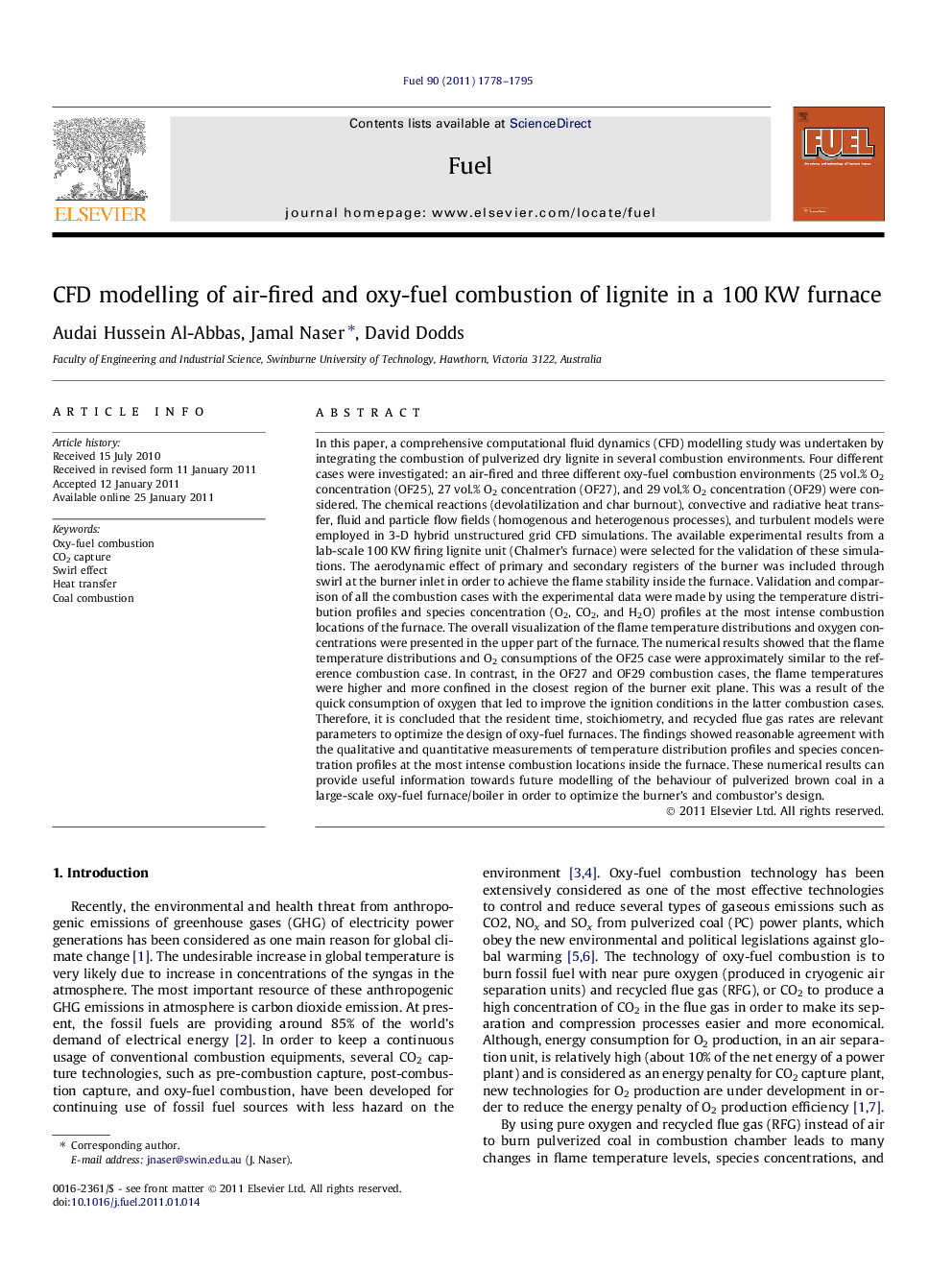| Article ID | Journal | Published Year | Pages | File Type |
|---|---|---|---|---|
| 206749 | Fuel | 2011 | 18 Pages |
In this paper, a comprehensive computational fluid dynamics (CFD) modelling study was undertaken by integrating the combustion of pulverized dry lignite in several combustion environments. Four different cases were investigated: an air-fired and three different oxy-fuel combustion environments (25 vol.% O2 concentration (OF25), 27 vol.% O2 concentration (OF27), and 29 vol.% O2 concentration (OF29) were considered. The chemical reactions (devolatilization and char burnout), convective and radiative heat transfer, fluid and particle flow fields (homogenous and heterogenous processes), and turbulent models were employed in 3-D hybrid unstructured grid CFD simulations. The available experimental results from a lab-scale 100 KW firing lignite unit (Chalmer’s furnace) were selected for the validation of these simulations. The aerodynamic effect of primary and secondary registers of the burner was included through swirl at the burner inlet in order to achieve the flame stability inside the furnace. Validation and comparison of all the combustion cases with the experimental data were made by using the temperature distribution profiles and species concentration (O2, CO2, and H2O) profiles at the most intense combustion locations of the furnace. The overall visualization of the flame temperature distributions and oxygen concentrations were presented in the upper part of the furnace. The numerical results showed that the flame temperature distributions and O2 consumptions of the OF25 case were approximately similar to the reference combustion case. In contrast, in the OF27 and OF29 combustion cases, the flame temperatures were higher and more confined in the closest region of the burner exit plane. This was a result of the quick consumption of oxygen that led to improve the ignition conditions in the latter combustion cases. Therefore, it is concluded that the resident time, stoichiometry, and recycled flue gas rates are relevant parameters to optimize the design of oxy-fuel furnaces. The findings showed reasonable agreement with the qualitative and quantitative measurements of temperature distribution profiles and species concentration profiles at the most intense combustion locations inside the furnace. These numerical results can provide useful information towards future modelling of the behaviour of pulverized brown coal in a large-scale oxy-fuel furnace/boiler in order to optimize the burner’s and combustor’s design.
